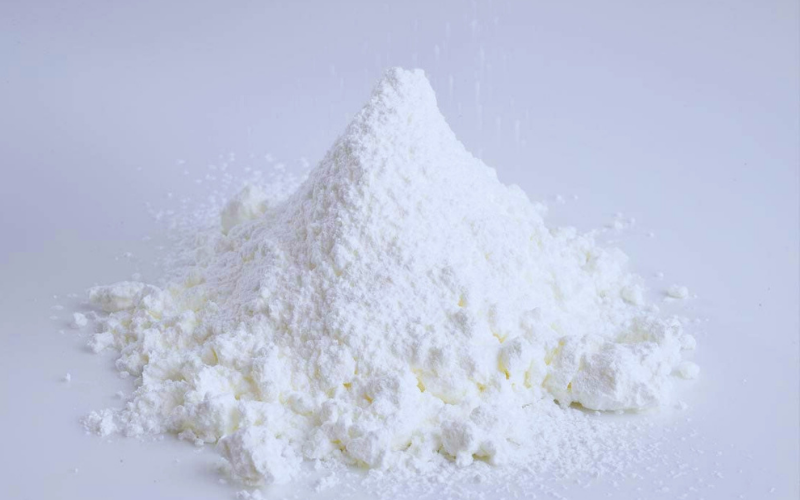
Beyaz Çimento Hakkında
İnşaat sektörü, yapıların dayanıklılığı ve estetiğini sağlamak için çeşitli malzemeleri titizlikle seçer. Bu bağlamda, beyaz çimento, özel projelerde estetik ve dayanıklılığı bir arada sunan bir çözüm olarak öne çıkmaktadır. Beyaz çimento, özellikle mimari yapılar, dekoratif uygulamalar ve dış cephelerde tercih edilen bir malzeme olup, standart gri çimentoya kıyasla daha yüksek beyazlık ve pürüzsüz yüzey sağlayarak, yapıların görsel cazibesini artırır.
Beyaz Çimentonun Özellikleri
Beyaz çimento, adını aldığı rengiyle ayırt edilirken, yapı ve dayanıklılık özellikleri bakımından klasik gri çimentodan çok farklı değildir. Ancak beyaz çimento, yapısındaki düşük demir ve magnezyum içeriği sayesinde doğal beyaz rengine kavuşur. Bu özellik, çimentonun mimari projelerde daha estetik bir görünüm kazandırmasına olanak tanır.
Beyaz çimentonun öne çıkan bazı özellikleri şunlardır:
- Yüksek beyazlık oranı:
Beyaz çimento, özel katkı maddeleri ve saf hammaddelerin kullanımıyla elde edilen yüksek beyazlık seviyesine sahiptir. Bu, özellikle dış cephelerde, iç mekanlarda ve dekoratif beton uygulamalarında önemli bir avantaj sunar. - İnce taneli yapı:
Beyaz çimento, daha ince taneli yapıya sahip olduğundan, yüzeylerde pürüzsüzlük sağlar ve dekoratif uygulamalarda detayların daha belirgin hale gelmesine yardımcı olur. - Estetik katkı:
Renkli pigmentlerle karıştırılabilmesi sayesinde, istenilen her renk tonunda beton elde edilmesine olanak tanır. Bu, özellikle dekoratif beton döşemeleri ve yapıların iç ve dış kaplamalarında büyük bir avantajdır. - Yüksek mukavemet:
Dayanıklılık açısından beyaz çimento, gri çimentoyla aynı mukavemete sahiptir. Bu nedenle, beyaz çimento estetik görünümle dayanıklılığı bir arada sunar.
Beyaz Çimentonun Üretim Süreci
Beyaz çimento üretimi, gri çimento üretimiyle benzerlik taşısa da, hammaddelerin seçimi ve işlenme süreçleri daha titiz bir şekilde gerçekleştirilir. Bu süreçte, çimentonun beyaz rengini koruyabilmesi için demir, manganez ve krom gibi elementlerin düşük seviyelerde tutulması kritik öneme sahiptir.
Üretim aşamaları şu şekildedir:
- Hammadde seçimi:
Beyaz çimento üretiminde kullanılan hammaddeler, kireçtaşı ve kil gibi doğal malzemelerden oluşur. Ancak, gri çimentodan farklı olarak, bu hammaddeler çok düşük seviyelerde demir oksit içermelidir. Ayrıca, beyaz çimentonun saflığını korumak için katkı maddeleri özenle seçilir. - Kalsinasyon:
Kireçtaşı ve kil gibi hammaddeler, özel fırınlarda yüksek sıcaklıklarda pişirilir. Beyaz çimento üretiminde, pişirme işlemi sırasında kullanılan fırınların sıcaklık kontrolü son derece önemlidir. Düşük demir içeriği sayesinde çimento beyaz rengini korur. - Soğutma ve öğütme:
Pişirme işlemi sonrasında oluşan klinker, soğutularak inceltilir ve ince öğütme işlemine tabi tutulur. Bu aşamada, beyaz çimentonun ince taneli yapısı elde edilir. - Paketleme:
Son aşamada, beyaz çimento özel torbalarda ambalajlanarak kullanıma hazır hale getirilir.
Beyaz Çimentonun Kullanım Alanları
Beyaz çimento, estetik görünümü ve dayanıklılığı ile farklı yapı ve projelerde geniş bir kullanım alanı bulur. Bu malzeme, özellikle mimaride dekoratif öğeler ve prestij projelerinde sıklıkla tercih edilir.
- Dekoratif beton uygulamaları:
Beyaz çimento, iç mekanlarda ve dış cephelerde kullanılan dekoratif beton kaplamalar için ideal bir seçimdir. Parke taşları, bordürler, bahçe düzenlemeleri ve teras gibi açık alanlar için üretilen dekoratif beton elemanlarında sıklıkla tercih edilir. Ayrıca, zemin kaplamaları, beton merdivenler ve çiçeklikler gibi pek çok dekoratif unsurda beyaz çimento kullanılabilir. - Mimari beton:
Beyaz çimento, modern mimaride sıklıkla kullanılan "mimari beton" yapılarında tercih edilir. Yapının strüktürel bir parçası olan bu betonlar, estetik görünümün yanı sıra, dayanıklılık ve uzun ömürlülük sağlar. Mimarlar, beyaz çimentonun bu özelliği sayesinde binalara hem modern hem de zarif bir görünüm kazandırır. - Hazır beton üretimi:
Beyaz çimento, aynı zamanda hazır beton üretiminde de kullanılır. Özellikle estetik açıdan önemli olan projelerde, bu tür betonların tercih edilmesi, yapıların şıklığını artırır. Bina girişleri, peyzaj düzenlemeleri ve özel beton elemanlar beyaz çimento ile üretilir. - Dış cephe kaplamaları:
Beyaz çimento, dış cephe kaplamalarında da sıklıkla kullanılır. Güneş ışığına dayanıklılığı ve yüzeyde oluşturduğu parlaklık ile estetik bir görünüm sunar. Bu nedenle, oteller, alışveriş merkezleri, kamu binaları gibi prestijli projelerde tercih edilen bir malzemedir. - Havuz ve su parkları:
Beyaz çimento, suya dayanıklılığı ve estetik görünümü sayesinde havuz ve su parkı inşaatlarında da yaygın olarak kullanılır. Havuz kenarları, su fıskiyeleri ve diğer suyla temas eden yapılar için dayanıklı ve su geçirmez bir çözüm sunar. - Tarihi yapı restorasyonları:
Tarihi yapıların restorasyonunda, orijinal malzemelere uygun olarak beyaz çimento kullanılır. Beyaz çimento, eski binaların orijinal görünümünü korurken, modern malzemelerin sağladığı dayanıklılık ve uzun ömürlülük avantajını da beraberinde getirir.
Beyaz Çimentonun Avantajları
Beyaz çimento, sahip olduğu çeşitli avantajlar sayesinde birçok yapı projesinde öne çıkar. Estetikten dayanıklılığa kadar sunduğu bu avantajlar, mimarlar ve inşaat profesyonelleri için vazgeçilmez hale gelmiştir.
- Estetik görünüm:
Beyaz çimento, yüksek beyazlık oranı sayesinde yapıların modern, temiz ve şık görünmesini sağlar. Özellikle dekoratif uygulamalarda, farklı renk pigmentleriyle birleştiğinde estetik tasarımlara olanak tanır. - Yüksek dayanıklılık:
Beyaz çimento, gri çimento ile aynı dayanıklılık özelliklerine sahiptir. Bu, özellikle dış mekanlarda ve sert hava koşullarına maruz kalan yapılarda uzun ömürlülük sağlar. - Renk seçenekleri:
Beyaz çimento, doğal renginin yanı sıra renkli pigmentlerle karıştırılarak farklı renk seçenekleri sunar. Bu da mimari projelerde geniş bir tasarım özgürlüğü sağlar. - Çevre dostu:
Beyaz çimento, çevre dostu malzemelerden üretilir ve geri dönüştürülebilir. Üretim sürecinde kullanılan hammaddeler ve enerji verimliliği dikkate alınarak çevresel etkiler en aza indirilir.
Beyaz Çimentonun Kullanımında Dikkat Edilmesi Gerekenler
Beyaz çimento, yapısal ve estetik açıdan büyük avantajlar sunsa da, doğru kullanımı için bazı önemli hususlara dikkat edilmesi gerekir. Bu hususlar, malzemenin uzun ömürlü olmasını ve estetik görünümünü korumasını sağlar.
- Karışım oranları:
Beyaz çimento kullanırken, karışım oranlarına dikkat etmek gerekir. Özellikle renk pigmentleri ekleniyorsa, doğru oranlarda kullanılmalı ve homojen bir karışım elde edilmelidir. - Sıcaklık ve nem kontrolü:
Beyaz çimentonun dökümü sırasında ortam sıcaklığı ve nem seviyeleri dikkatlice kontrol edilmelidir. Aşırı sıcak veya soğuk hava koşulları, çimentonun kuruma sürecini olumsuz etkileyebilir. - Uygulama teknikleri:
Beyaz çimento, yüzeyde düzgün ve estetik bir görünüm bırakmak için doğru uygulama teknikleriyle kullanılmalıdır. Özellikle ince detaylarda, uzman uygulayıcılar tarafından özenle işlenmelidir.
Sonuç
Beyaz çimento, hem estetik hem de fonksiyonel özellikleriyle modern yapı projelerinde vazgeçilmez bir malzeme haline gelmiştir. Dayanıklılığı, ince yapısı ve geniş kullanım alanları sayesinde, beyaz çimento, geleceğin mimarisine estetik ve kalite katmaya devam edecektir. Doğru kullanıldığında, projelere hem estetik bir görünüm kazandırır hem de uzun ömürlü ve dayanıklı yapılar inşa edilmesine olanak sağlar.







